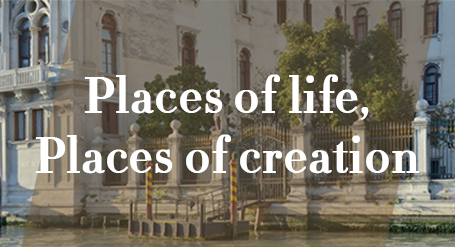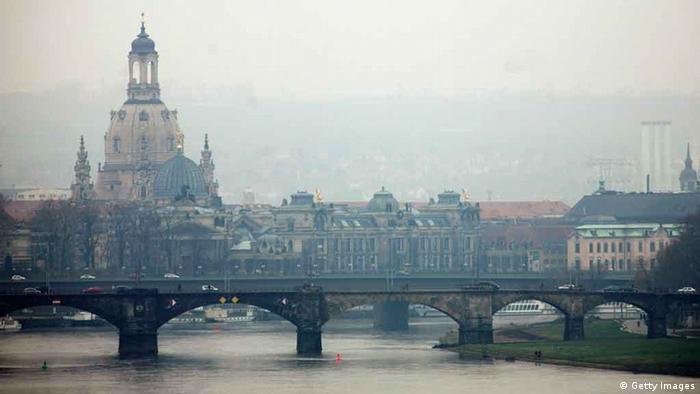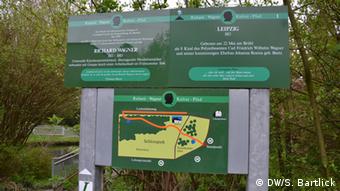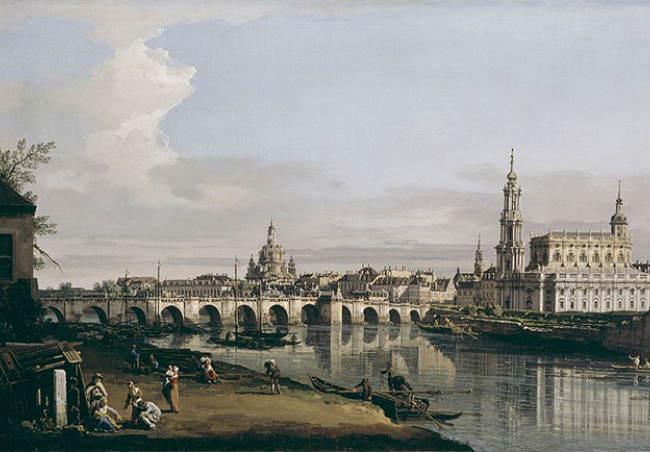
Wagner, the first European composer! If the name of the composer sounds more German than the noun “Germany”, the artist, himself always in search of notoriety and success that he could not find within the borders of the German Empire, exiled in his younger years to find recognition… elsewhere. And these new horizons, Wagner would seek them from London to Saint Petersburg, passing by Paris, Venice or Zurich, places that were as much living places as places of musical creation and artistic inspiration.
Dresden
Richard Wagner’s legacy in Dresden (by courtesy of DW.com website)
Composer Richard Wagner lived in Dresden longer than in any other city. He influenced the musical life of the metropolis on the Elbe River, but the city also shaped him. We retrace Wagner’s path.

A general view of the historic city of Dresden with its Frauenkirche church decision Copyright: Johannes Simon/Getty Images
Richard Wagner spent more than 20 years of his life in Dresden. It was in this city that the composer, who was born in 1813, attended Kreuzschule, or Cross School, served as Kapellmeister, and lived in an array of diversely equipped apartments. But those setting out to catch a glimpse of the places Wagner lived and worked will be sorely disappointed: hardly any of the buildings remain in their original style. Those buildings that survived Dresden’s rapid expansion in the late 19th century were destroyed during the bombing of the city in World War II.
Instead, one must head to the Stadtmuseum, the municipal museum, to learn more. A special exhibition looks at Wagner’s life in Dresden.
Childhood years in the city on the Elbe
Richard Wagner’s family moved from Leipzig to Dresden when he was just a year old. At the time, the metropolis on the Elbe River was a majestic royal capital in which Saxony’s King Friedrich August I cultivated ceremonial court events. Thus, the theater was named Königliches Hoftheater (Royal Court Theater), then young and unknown composer Carl Maria von Weber was named Königlich-Sächsischer Hofkapellmeister (Royal Saxon Hofkapellmeister) at the newly established opera, and Richard Wagner’s stepfather – actor Ludwig Geyer – was able to boast the title of Königlicher Hofschauspieler (Royal Court Actor).

Wagner bust by Walter Arnold Copyright: DW/S. Bartlick
A bust of Richard Wagner by Walter Arnold
The multi-talented Geyer inspired and influenced young Wagner in a variety of ways. He was friends with artists and musicians, ensured that Wagner had well-educated teachers, and often attended the theater and concerts with little Wagner and his older sisters.
Richard’s sister Klara performed in Geyer’s satirical piece “Der bethlehemitische Kindermord” (“Massacre of the Innocents”), reflected on the playbill from 1821. The playbill can be viewed in the first section of a Dresden exhibition that shows contemporary urban views and portraits of people who influenced Wagner in his childhood years.
Artistic breakthrough
Wagner moved back to Leipzig with his family in 1827. Fifteen years later and with his first wife, Minna Planer, the composer returned to Dresden, where he celebrated his artistic breakthrough with the premiere of his opera “Rienzi.” At the beginning of March 1843, he earned a life-long post as Royal Kapellmeister and in the years following, enjoyed a series of triumphs with his works performed in the famously beautiful Semperoper. The exhibition in Dresden also pays tribute to these successes, but largely focuses on Wagner’s contribution to the history of Dresden.

Model of original Semperoper Copyright: DW/S. Bartlick
A model of the original Semperoper in Dresden
The show, for instance, takes an in-depth look at Wagner’s involvement in getting the remains of Carl Maria von Weber transported back to the city. Weber is considered the founder of German opera, and died while on a concert tour in London in 1826. Wagner devoted months to getting the remains of his role model returned to Germany, even composing a choral work and symphonic dirge for Weber’s funeral.
Going to the barricades
Wagner had many friends and artistic contemporaries in Dresden. One was musical director August Röckel, who is known to have influenced the composer politically. Even before the German Revolution of 1848/49, Wagner had called for the overthrow of class society in the political magazine called “Volksblätter” published by Röckel, and also campaigned for the freedom of the individual. King Friedrich vehemently opposed all attempts at establishing a parliamentary system in Saxony, yet that’s precisely what the revolutionary spirits of 1848/49 were aiming for. Once the revolution reached Dresden in May 1849, violence escalated. The rebels barricaded the Old City, prompting the King to send troops to advance against them.

A model of the conflicts at the barricades in Dresden in 1849 Copyright: DW/S. Bartlick
This exhibition model shows conflicts at the barricades in Dresden in 1849
Richard Wagner was not directly involved in the conflicts, but it’s been established that he acted as a guard and dispatch runner. That clearly did not jibe with his post as Royal Kapellmeister, thus transforming him into one of the “Wanted” faces on posters around the city. Wagner managed to escape arrest by fleeing Saxony. The “Dresden” phase of Wagner’s life thus came to an abrupt end. It was not until 20 years later that his works again appeared on opera programs again in the city.
Wagner everywhere
Of course, the exhibition in Dresden’s Stadtmuseum does not come to a close with Wagner’s escape from the city, but rather, in the last section, looks at the reception of the artist and his work in the time thereafter. Wagner became a composing legend even within his own lifetime. He was popularized during the German Empire – with little pictures of his opera characters wrapped up in chocolate bars. The National Socialists co-opted his work; and even in the GDR, he was depicted as a progressive social revolutionary. Each ideological group stylized their own version of Wagner. While the self-professed anti-Semite is viewed critically as a person these days, his musical works are celebrated around the world.
After viewing the exhibition in Dresden, those who make their way by bus or car to the little village of Graupa, just a few kilometers south of the city, will encounter a few more facets of Wagner’s life. The composer loved nature and, during hikes in the outdoors, sought inspiration and refuge from the stresses of everyday life.

Getting a taste of nature: the Wagner path in Graupa Copyright: DW/S. Bartlick
Getting a taste of nature: the Wagner path in Graupa
Nature-lover Wagner
In the summer of 1846, Wagner rented rooms in a rustic farm house. It was there that he devised his famous “Lohengrin” opera in just a few weeks. Now, nearly everything revolves around the composer in this little place: visitors can view his rooms there, which have been immortalized in the style of that time. In the nearby Jagdschloss (Hunting Castle) in Graupa, a contemporary, multi-media show depicts Wagner’s life and artistic development in Saxony up until 1850. And a little “cultural path” through the castle gardens is dedicated to the composer. Here, as in the composer’s opera temple in Bayreuth, Wagner can speak to all of the senses.
Source : Website DW.com
Link to read the full article : clik here.
If you wish to share further information about this article, please feel free to contact us !
